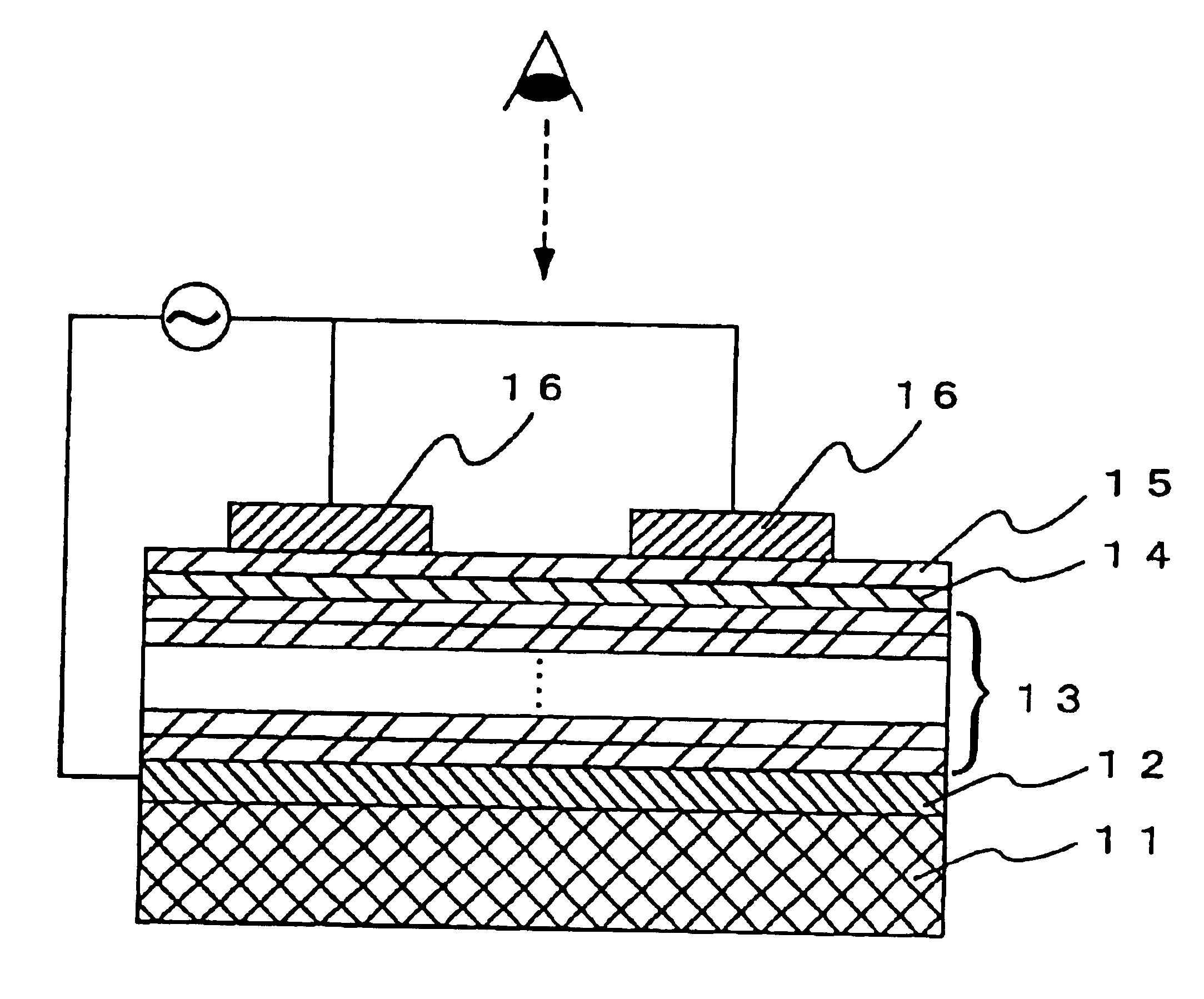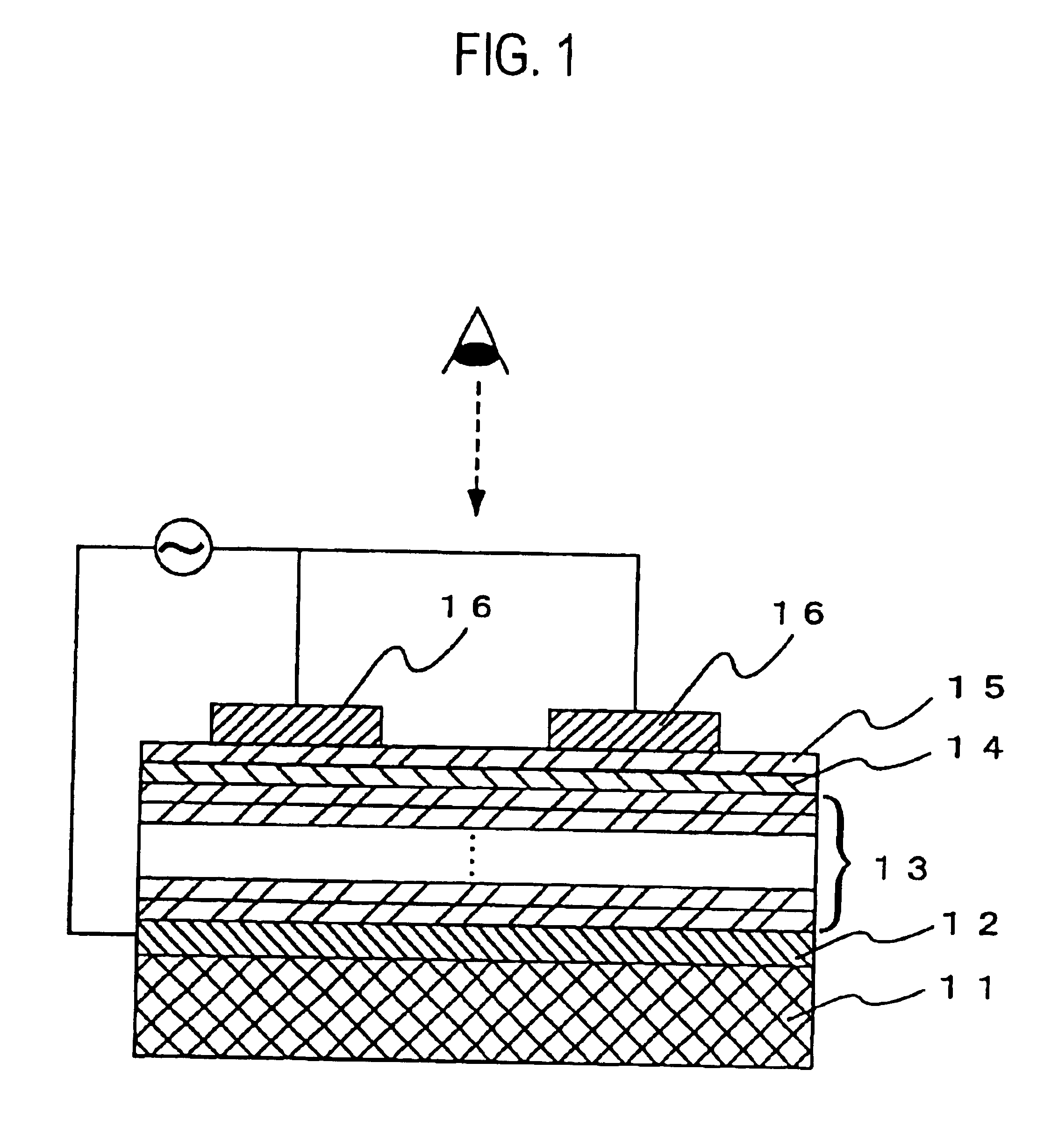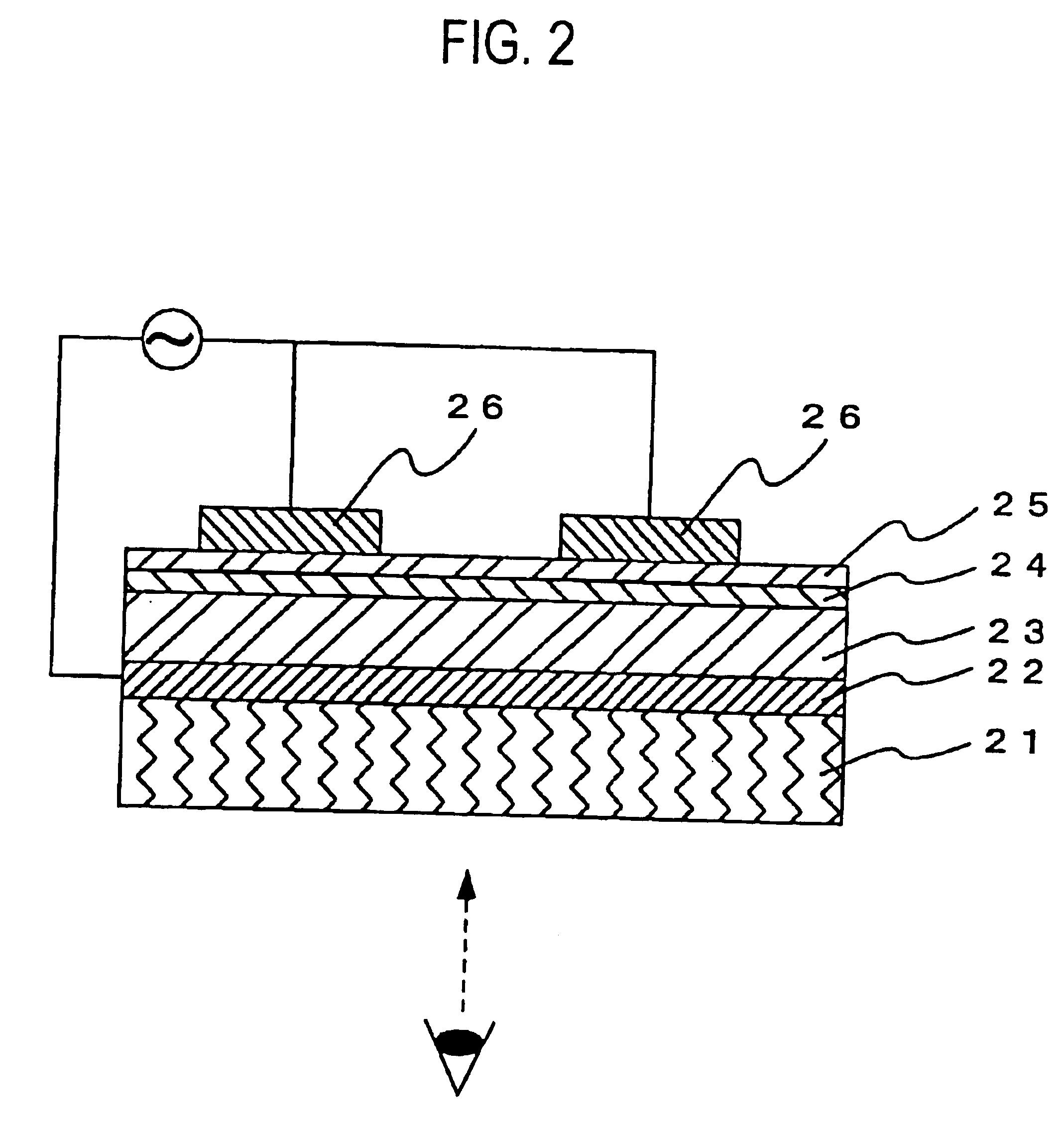Thin-film EL device, and its fabrication process
a thin-film el and fabrication process technology, applied in the manufacture of electrode systems, electric discharge tubes/lamps, discharge tubes luminescent screens, etc., can solve the problems of limited use, structural problems such as unsolved thin-film el devices, and difficulty in reducing to nil steps
- Summary
- Abstract
- Description
- Claims
- Application Information
AI Technical Summary
Benefits of technology
Problems solved by technology
Method used
Image
Examples
example 1
A 1 .mu.m thick Au thin film with trace additives added thereto was formed by sputtering on a surface polished alumina substrate of 99.6% purity, and heat treated at 700.degree. C. for stabilization. Using a photoetching process, this Au thin film was patterned in a striped arrangement comprising a number of stripes having a width of 300 .mu.m and a space of 30 .mu.m.
A dielectric layer was formed on the substrate using the solution coating-and-firing step. The dielectric layer was formed by repeating given times the solution coating-and-firing step wherein a sol-gel solution prepared as mentioned below was spin coated as a PZT precursor solution on the substrate and fired at 700.degree. C. for 15 minutes.
To prepare a basic sol-gel solution, 8.49 grams of lead acetate trihydrate and 4.17 grams of 1,3-propanediol were heated under agitation for about 2 hours to obtain a transparent solution. Apart from this, 3.70 grams of a 70 wt % 1-propanol solution of zirconium.normal propoxide and...
example 2
A soda lime-based high heat-resistant glass substrate (having a softening point of 820.degree. C.) was provided. A 0.5 .mu.m thick Ag / Pd / Cu thin film as a thin-film lower electrode layer was formed by sputtering on this substrate, and then heat treated at 700.degree. C. for stabilization. A pattern comprising a number of stripes of 500 .mu.m in width and 50 .mu.m in space was formed by patterning the thin-film lower electrode layer using a photoetching process.
A dielectric layer was formed on the substrate using the solution coating-and-firing step. The dielectric layer was formed by repeating given times the solution coating-and-firing step wherein a sol-gel solution prepared as mentioned below was dip coated as a BaTiO.sub.3 precursor solution on the substrate and fired at the maximum temperature of 700.degree. C. for 10 minutes. The then thickness of each sub-layer in the dielectric layer was 1.5 .mu.m.
To prepare the BaTiO.sub.3 precursor solution, PVP (polyvinyl pyrrolidone) hav...
PUM
 Login to View More
Login to View More Abstract
Description
Claims
Application Information
 Login to View More
Login to View More - R&D
- Intellectual Property
- Life Sciences
- Materials
- Tech Scout
- Unparalleled Data Quality
- Higher Quality Content
- 60% Fewer Hallucinations
Browse by: Latest US Patents, China's latest patents, Technical Efficacy Thesaurus, Application Domain, Technology Topic, Popular Technical Reports.
© 2025 PatSnap. All rights reserved.Legal|Privacy policy|Modern Slavery Act Transparency Statement|Sitemap|About US| Contact US: help@patsnap.com



